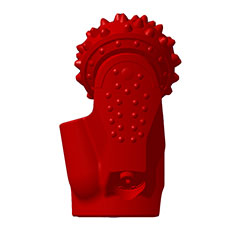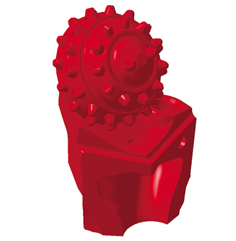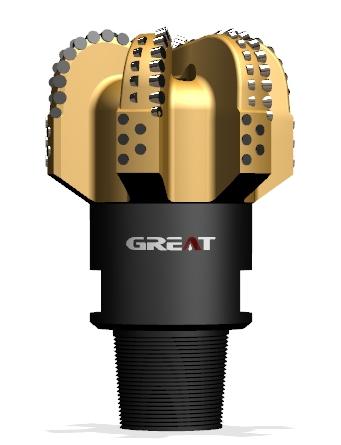The geological layers that need to be drilled through are complex and varied. They not only include clay and sand layers, but also quicksand and even rock layers. For non-rock layers, an ordinary hole reamer is sufficient. In the past, rock layers were a forbidden zone for horizontal directional drilling because ordinary hole reamers were powerless against them. With the continuous progress of technology, rock hole reamers have been successfully developed at home and abroad.
Key points for selecting rock hole reamers
Choose the size and type of rock hole reamer according to the type of geological layers drilled through. The type of geological layers is an important factor in correctly selecting the size and type of rock hole reamer. When drilling through soft rock layers, larger-diameter hole reamers can be used with fewer drilling times, and the difference in size between adjacent hole reamers can be larger, with a difference of 100-200mm. When drilling through hard rock layers, the diameter of the hole reamer cannot vary too much, with a difference of 50-150mm, and multiple drilling times are required to achieve the best drilling efficiency and smooth discharge of drilling cuttings.
Horizontal directional drilling is a high-risk industry, and accidents can occur at any time if care is not taken. In order to meet the needs of replacing hole reamers midway through single drilling or unblocking when stuck, the design of the rock hole reamer body should also consider the function of reversing the drill hole. The main purpose of expansion is to remove the drilling cuttings in the hole, not just to cut them, so we hope that the drilling cuttings generated by the hole reamer are small enough to allow the mud to suspend the drilling cuttings and smoothly discharge them to the surface when choosing the hole reamer.
Key points for operation control of rock hole reamers
The main parameters for operation control of rock hole reamers are the push-pull force (pull force for reverse expansion, push force for forward expansion) applied by the drilling rig to the hole reamer, the rotation speed, and the mud pumping quantity during expansion. The control points are as follows:
Different diameters and forms of rock hole reamers have different requirements for drilling pressure. Especially during long-distance rock layer expansion, reasonable pulling force and torque must be controlled to avoid serious consequences caused by excessive wear of the hole reamer. Most rock layer expansion accidents are caused by excessive pursuit of drilling speed and excessive drilling pressure.
Rotation speed is another important control parameter for rock expansion drilling. The rotation speed referred to here is the speed at which the drilling rig drives the drill rod and rotates the hole reamer. The adjustment of rotation speed is mainly related to the hardness of the rock. When drilling through soft rock, when the diameter of the hole reamer is ≤750, the recommended rotation speed should not exceed 60rpm. When the diameter of the hole reamer is greater than 750, the recommended rotation speed should not exceed 40rpm. When drilling through hard rock, the rotation speed should be correspondingly reduced, generally 10-40rpm. Lower rotation speed will reduce drilling efficiency and is not cost-effective, while higher rotation speed can cause abnormal wear of the hole reamer, and even lead to expansion accidents.
An important principle that should be followed when operating rock expansion is that the harder the rock to be broken, the greater the drilling pressure required, and the lower the drilling speed required. At the same time, it should be noted that under the same drilling speed conditions of the drilling rig, the effect produced by different diameters of hole reamers is different. The larger the diameter of the hole reamer, the faster the line speed at the outer edge, and the more serious the wear and tear.
When drilling through rock layers, it is critical to ensure the pumping quantity of the mud. At this time, the main role of the mud is to cool the hole reamer and carry the drilling cuttings. The actual pumping quantity of the mud should be calculated based on the amount of drilling cuttings produced by each drilling level and the carrying capacity of the mud, and should generally not be less than 1m3/min.
Method of construction when the hole reamer enters the rock layer: When the rock hole reamer enters the rock layer from soft soil or enters the hard rock layer from soft rock, the operation point is to first slow down the expansion speed, reduce the drilling pressure, and wait for the hole reamer to enter the rock layer or hard rock layer completely before increasing the drilling pressure. If the drilling pressure applied during this process is too large, it is likely to cause sticking, thereby damaging the hole reamer, or at least shortening the life of the bearing of the hole reamer.
 English
English français
français Deutsch
Deutsch Español
Español italiano
italiano русский
русский português
português العربية
العربية tiếng việt
tiếng việt ไทย
ไทย Nederland
Nederland




